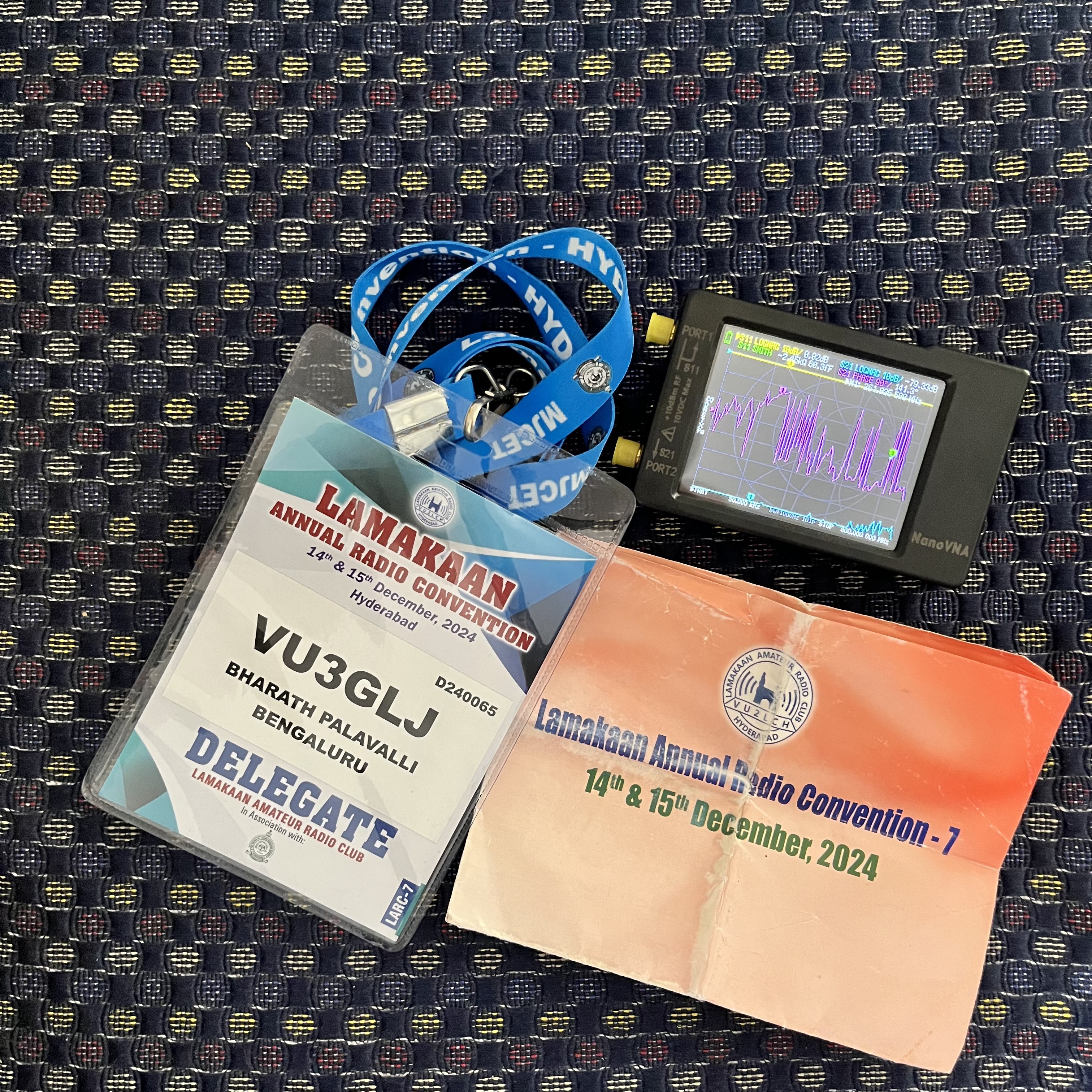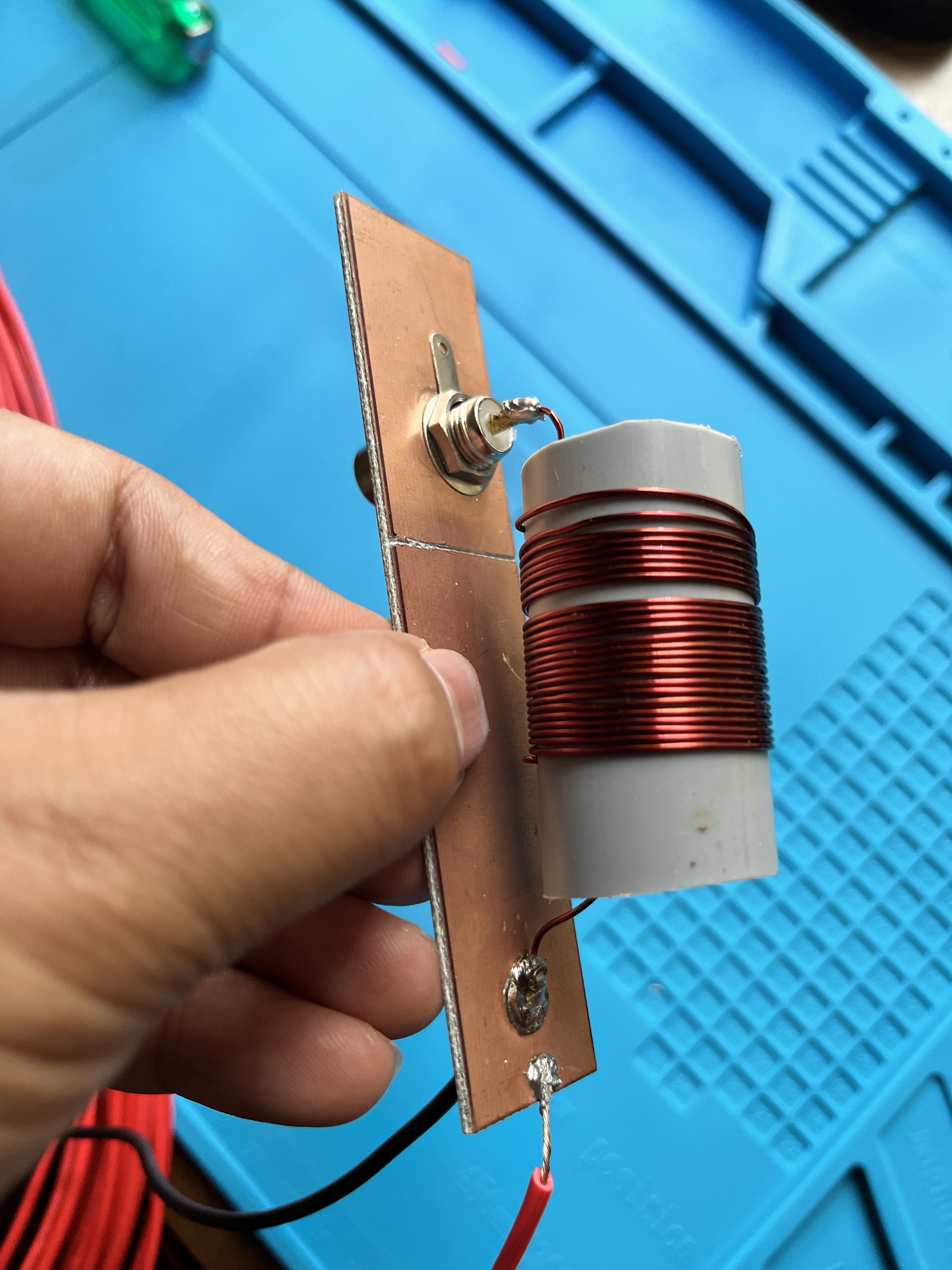Setting up a lab for home-brewing
Reading time: 3 minutes
Figure 1: My First Radio Convention
One of the joys of trying to get into amateur radio was the prospect of home-brewing. As someone who hasn’t soldered a single component, it is an interesting starting point. I’ve been asking a bunch of local HAMs for help and I’ve been getting help from different places. On a recent visit to Lamakaan Annual Radio Convention1 on 14th and 15th of December at Hyderabad, there was a session on home-brewing by VU2ESE (Farhan). Incidentally, VU3CER (Dhiru) and I were part of the session. I had reached out to him given his prolific work on various digital modes and the apartment antenna that he has shared as open-source 2. I had previously reached out to VU2TNA (Sanal) about how to go about buying things and what projects to begin with and he had shared a nice set of equipment that worked well as a starter set.
Farhan began rattling out a nice set of equipment for folks to get started with home-brewing and Dhiru suggested that we could put together a quick list post that. Incidentally, we created a first cut of equipment required and we have a contribution for people in Turkey by TA1ANW (Buğra)! You can access the repository on GitHub and “Anyone is free to copy, modify, publish, use, compile, sell, or distribute this software, either in source code form or as a compiled binary, for any purpose, commercial or non-commercial, and by any means.”3.
Here is my current list of equipment I have,
| Si. No. | Equipment | Brand | Price (in INR) | Comments |
|---|---|---|---|---|
| 1 | Multimeter | Mastech MAS830L Digital Multimeter | 725 | |
| 2 | Wire-stripper | Multitec 150b Wire Stripper and Cutter | 60 | |
| 3 | Soldering Iron | Soldron High-Quality 25 Watts | 350 | Recommendation by most folks is for ceramic bits |
| 4 | Soldering Stand/Magnifier | – | 400-600 | Any generic magnifier with iron stand will do |
| 5 | Soldering/De-soldering wire | – | 40 | Soldron is considered decent |
| 6 | Soldering Flux | – | 100 | Soldron flux is easily available |
| 7 | Cutter | DURATOOL D00120 Side Cutter | 300 | |
| 8 | Line-tester | Taparia 815 Green Handle Line Tester | 55 | |
| 9 | Screwdriver | Stanley 9-Way Screwdriver Set (STHT62511) | 730 | |
| 10 | Anti-static mat | – | 800-1200 | Any decent anti-static mat will do |
| 11 | Table vice | Taparia Table Vice, Stand with PCB Clips | 600-1000 | Useful for soldering and stability |
| 12 | NanoVNA | NanoVNA H4 | 4000 | Get any VNA for tuning antennas |
The grand total for my home-lab at this point is INR 8160 (please note that the NanoVNA is about half of that cost), without the NanoVNA, we can get started with home-brewing for about INR 4000.
Now that I had a basic set of equipment, I decided to attempt the QRP EFWH that was discussed at the workshop by Farhan at LARC. I did finish it fairly quickly, given that they had provided all the material required for the air-core inductor and making a simple LC circuit. I quickly connected it to the NanoVNA and couldn’t make sense of the readings. VU3CQM (Renu) and VU3VWR (Ragav) suggested that I check for connectivity and if I have soldered the wires correctly. I pulled out the multimeter and realised that only the pig tail was soldered correctly and none of the other elements were soldered correctly. So I guess, patience trumps enthusiasm and eagerness in this case!

Figure 2: A failed LC circuit for a QRP EFHW
More on my attempts later, but do head over to https://github.com/kholia/Budget-RF-Lab and let us know if this makes sense or if you’d like to make a localised version for your geography.
https://larc7.larc.in/, do check out the main site of Lamakaan Annual Radio Club at https://www.larc.in. ↩︎
The guide or Systemization of Knowledge (SoK)is licensed under The Unlicense. ↩︎
#larc #homebrew #amateur-radio #ham #equipment #radio #rf #open-source